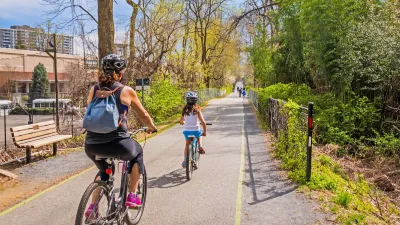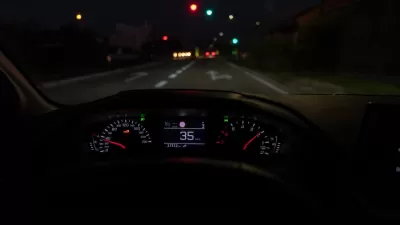The rise in cyclist and pedestrian deaths in the United States points to preventable failures in road design and regulations.

Americans are routinely taught to treat traffic crashes and automobile-related deaths as tragic, but sometimes unavoidable, “accidents,” writes Farhad Manjoo. “But as the journalist Jessie Singer has argued, in much of American life, many ‘accidents’ are far from accidental — they are instead the inevitable result of political and economic choices that society has made, and they might have been prevented had we made other, safer choices.”
Manjoo points to simple ways to improve safety for bike riders being implemented in other countries: “protected bike lanes, which offer a physical barrier between cars and bicycles; raised areas at corners behind which bikes could safely queue while waiting for the light to change; a “setback” that forces cars to wait farther back from the intersection, improving their ability to see pedestrians and bikers, and separate signals for bikes and cars, to help each kind of vehicle stay out of the other’s way.”
In a “major reversal” of prior trends, writes Manjoo, “American roads have grown especially dangerous to ‘nonoccupants’ of vehicles — that is, bicyclists and pedestrians. In 2011, 16 percent of traffic deaths were of nonoccupants; in 2020 it was 20 percent.”
Manjoo argues that to improve safety for all road users, we need a fundamental shift in how we approach urban design, transportation planning, and the regulation of vehicles. “We have to make cars smaller, because S.U.V.s are significantly more deadly to pedestrians than sedans. We have to slow them down, because speed kills. And we have to be willing to slightly inconvenience drivers to improve the roads for everyone else.”
FULL STORY: Riding a Bike in America Should Not Be This Dangerous

Planetizen Federal Action Tracker
A weekly monitor of how Trump’s orders and actions are impacting planners and planning in America.

San Francisco's School District Spent $105M To Build Affordable Housing for Teachers — And That's Just the Beginning
SFUSD joins a growing list of school districts using their land holdings to address housing affordability challenges faced by their own employees.

The Tiny, Adorable $7,000 Car Turning Japan Onto EVs
The single seat Mibot charges from a regular plug as quickly as an iPad, and is about half the price of an average EV.

As Trump Phases Out FEMA, Is It Time to Flee the Floodplains?
With less federal funding available for disaster relief efforts, the need to relocate at-risk communities is more urgent than ever.

With Protected Lanes, 460% More People Commute by Bike
For those needing more ammo, more data proving what we already knew is here.

In More Metros Than You’d Think, Suburbs are Now More Expensive Than the City
If you're moving to the burbs to save on square footage, data shows you should think again.
Urban Design for Planners 1: Software Tools
This six-course series explores essential urban design concepts using open source software and equips planners with the tools they need to participate fully in the urban design process.
Planning for Universal Design
Learn the tools for implementing Universal Design in planning regulations.
Smith Gee Studio
City of Charlotte
City of Camden Redevelopment Agency
City of Astoria
Transportation Research & Education Center (TREC) at Portland State University
US High Speed Rail Association
City of Camden Redevelopment Agency
Municipality of Princeton (NJ)





























